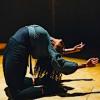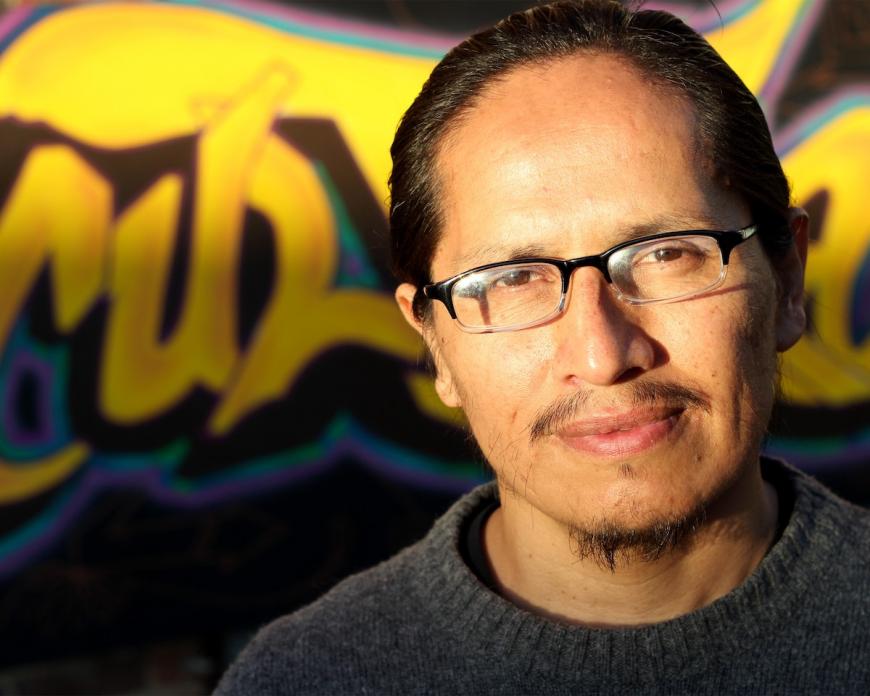
It is early June 2021 when José Ome Navarrete Mazatl and I manage to arrange a phone conversation. We last spoke in December of 2019 about the 2020 FRESH Festival and a weekend of performances he co-curated featuring Black female dance artists and activists. Now, he is in his native Mexico City, where spotty internet reception and restricted cell phone range require extra travel and other strategic moves to make our call possible. When we finally connect, we marvel at the eerie pandemic paradox of “it has been an eternity” versus “that happened just yesterday, didn’t it?” While more than a year without live performances has passed and seems like a lifetime ago, memories of the FRESH Festival remain unfaded and, we agree, are “just a blink away” in our minds.
Navarrete Mazatl is a multidisciplinary artist whose work centers on social justice. He founded and co-directs with Debby Kajiyama NAKA Dance Theater, a collective that creates experimental performance works and develops collaborative, community-based multidisciplinary projects drawing upon history, folktales, mythologies, rituals, and most presciently, current social justice issues.
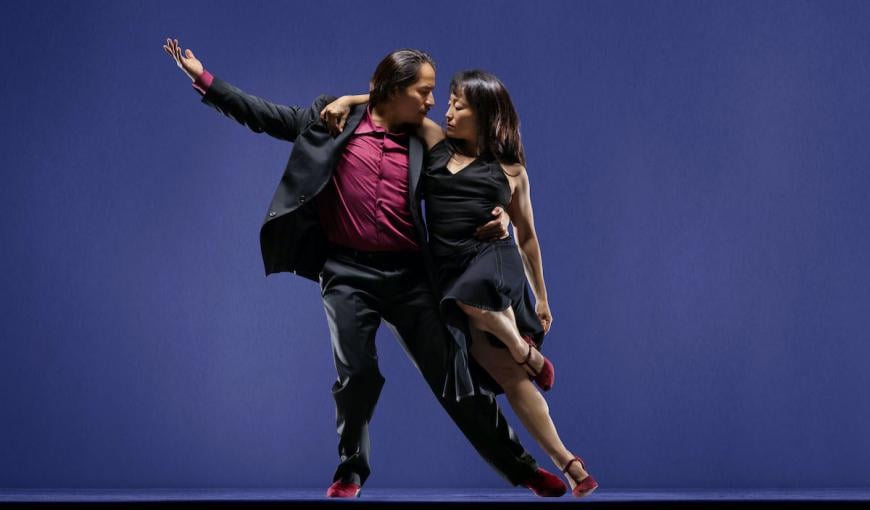
This month, Navarrete Mazatl is continuing a years-long project with MUA (Mujeres Unidas y Activas), a group of Latina women who advocate for legal rights for domestic workers and support survivors of domestic abuse. And keeping the collaboration with MUA going hasn’t been Navarrete’s only good fortune during the pandemic. In 2021, he was awarded a Guggenheim Fellowship as a choreographer, marking a career pinnacle he says was entirely unexpected because his work is not “beautiful choreography presented in an opera house.”
Striking a far different, tragic, and personal note, Navarrete, as we begin our conversation, reveals that during the pandemic he has — while not unappreciative of the honors and opportunities received — encountered immense, immeasurable loss. His mother succumbed to COVID-19, and his words on the impact it is having on him personally and professionally echo long after our phone call concludes.
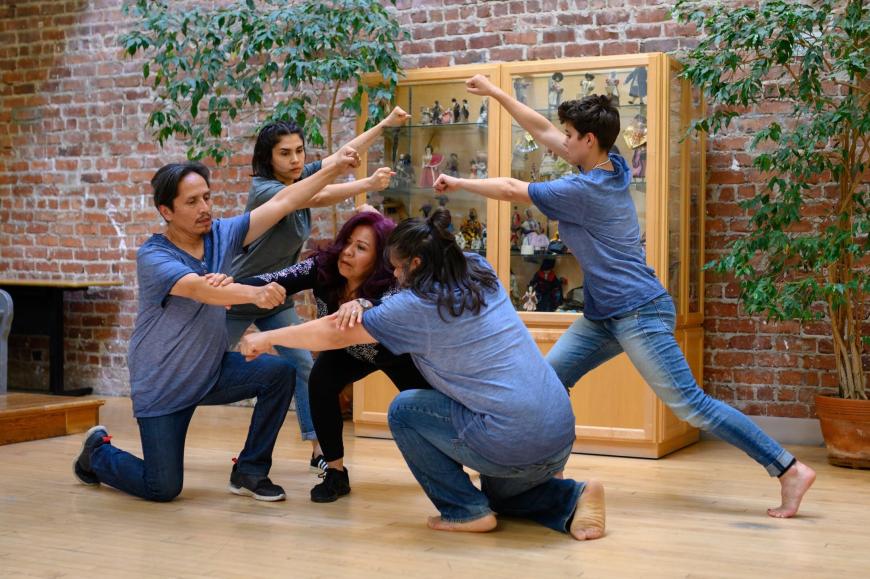
Let’s start with talking about significant aspects of your experiences during the pandemic.
Oh dear. So big. I lost my mother during the pandemic. That was a powerful, emotional, devastating thing for me. It was COVID, yes. That’s how the pandemic affected me. We had a strong relationship, long, very open, vast. I’m mentally having a departure [from that] which has allowed me to contemplate mortality in a new way. All these people we love and who are extremely important in our lives are no longer with us. I’ve been navigating these times we are living. These are reflections about me. I grew up 20 more years in the moments after my mother left. With that departure, one everybody will face, it is a way of finding a new way of navigating in life. There are different levels of coping.
In terms of my work with these women during this time — these Latina immigrant women who pursue the empowerment of domestic workers in the Bay Area with Mujeres Unidas y Activas — I’m here in Mexico because of a project started three years ago where we investigated the phenomenon of disappearing, of forced disappearance. During the process of creating that piece we were connected with families in Mexico.
What is this work you are doing in Mexico City generating for you internally?
For me, the role of women in my life is very strong and connected to my mother. My mother was powerful, and I do feel that is the permission I have to work with MUA. Being a survivor of domestic violence — I saw my mother attacked and saw her being punched and attacked during domestic violence between my father and my mother — that is the relationship and my connection with MUA. I am trying to incorporate that experience with art as healing, as self-care for domestic abuse. I am using movement, theater, poetry, to raise visibility of this particular group. I am interested in my relationship with this community because I wanted to understand the intersection between contemporary art, social justice, and community. All three elements I am looking at: I’m using artistic tools to elevate the empowerment and visibility of Latina women.
Let’s leap to an entirely different mountain top: the Guggenheim Fellowship. How were you contacted and what initial thoughts arose?
It was a big surprise because I never expected to get that award because of the work I do. It is not traditional contemporary dance. I use tools of choreography, but I’m usually working with non-dancers, non-actors. I’m not creating beautiful choreography presented in an opera house. I’m not interested in that. How can I use my artistic trajectory to advance a particular community, perhaps a community that is in the marginal places of society? That is what I’m interested in.
Does that mean the definition of choreography is changing?
The concept of choreographing is changing. Ideas about movement are opening up, the source of expression comes in a different way. When I found out [about the Guggenheim], I thought, “Oh my god, they gave it to me.” I have seen in the last few years and this is an indication that they are supporting artists and choreography that are not works for or by a dance company or traditional theater group. It was funny; I first got an email that said they thought I was a finalist, however the board needs to approve it so please don’t say anything. We are not done deciding and you might be awarded. They seemed not secure yet. In the second email, they said I was awarded. It was like you might … then the second email saying you get it.
What was most important for you to include in your application?
Working with this group of Latina immigrant women. It was creating raw performances based in the testimonies of Latina women living in the United States. That was my proposal. I had a lot of video materials that reflected the work I am doing with that particular group, so I didn’t need details to explain it. The work is powerful, and in the videos, you can see the emotional, invigorating empowerment of these women. They are super strong and helping their own communities.

What questions would you like to ask, or which social justice issues will you choose to address, in new work during the next few years?
Definitely the relationship with women and other genders is important to me. Having a balanced understanding is important. It reflects how we interact with our environment. I feel concerned by gender violence. I get overwhelmed, and I try to figure out myself as an artist and what I will do. It reflects on how we relate to our community, our family, how we treat our water, our land — all those things we de-attach from because of the ways we are living. We don’t understand where things come from. Especially our food. We don’t have that concern because everything is given to us. We need to know, because nurturing things have to do with Mother Earth, with our mothers, with women, the environment.
Gender violence and detachment: What working practices have you found to address those separations?
One of the things I’m thinking about is how can I self-care? I get super inspired and then I don’t have the capacity to do all I think of. I get overwhelmed and tired. I have to take care of myself and my main collaborators. Do we need to slow down? Can we use this idea of everything being overwhelming — the pandemic, the climate is horrible, the gender violence is horrible. How is our work affected? Using the radical act of slowing down, that is something I deeply need to do to embody myself.
It is OK to slow down, but also, I must be extremely clear in my intentions. That has to do with contemplation. There needs to be another way to interact. We are so busy we don’t allow ourselves to say no. If I can find magic in one simple thing that allows me to impact something, to plant a seed and hope it will flourish — slowing down is important to achieve that. I’m trying to figure out during the pandemic who in the community needs a specific thing, like food. That shifts my priorities.
What will being a choreographer mean or entail in the next two to five years?
I choose and I like to look at dance that has relationships. I am looking for people of color, artists that connect contemporary art and social justice. That draws my attention. Without that context, I’m not interested. I’m looking at dance in a very particular lens. A lot of amazing artists need support. I get excited because this is the next generation. My choreography is tailored in a particular way. I don’t watch ballet at this time. Except there is a [Canadian] choreographer Crystal Pite. I love her work. She is ballet-based, but for some reason, the topics and the things she tackles are fascinating to me. There is a piece based on The Green Table, and it was a conversation. The dancers and the dialogue were brilliant. Another project she did having to do with schizophrenia, I saw she has an unbelievable voice. There is a sense of embodiment that is powerful to me.
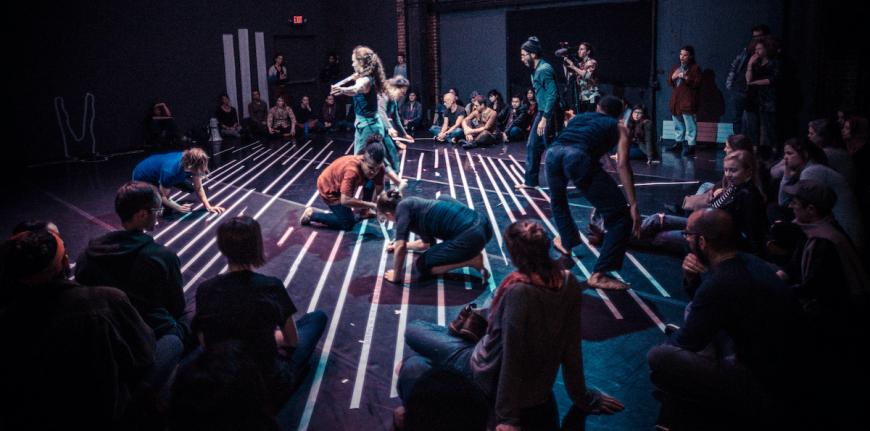
Do you experience fear or find it discouraging to think about the future for arts organizations and their ability to achieve increased diversity?
I worry about it. I feel people are talking about equity and social justice at foundations. Some of them talk about non-anti-Blackness. But I find myself invited by organizations to do work, or by foundations giving money to organizations to do POC programming. I am between these organizations and my doing my work. I think if they really want to support artists of color, you need to give money to them directly and not someone in between. It is problematic. A few foundations are giving to organizations to do POC work, and I care and I see that. But they could just give the money to people who can present their own work, not to dance companies and others to present the work.
What about accessibility and arts education for underserved communities? Is the energy for improvement purposeful, or more talk than action?
There are artists and colleagues of mine who are concerned about that. We are talking about taking small but strong steps. Accessibility is expensive but we are trying to articulate the needs. It’s a long way to go. We are hoping there will be one night in every budget for performances that gives money for accessibility and disability needs: justice language super-captions, sign language translators, interpreters, ticket subsidies, all of those things.
When we spoke in 2019, you mentioned San Francisco has lost its color, its courage, its vibrancy. Do you think that is coming back?
It is happening. By having the traumatic experience of the pandemic, by being isolated and inside, I feel there is energy for the emergence of art and art for change. It would be amazing to be having a renaissance like they had in France when everything was so open and people were concerned with life, art, philosophy, and community.
What steps would you like to see large arts organizations and art foundations take to improve the lives of artists but also contribute to the well-being of society, support social justice, preserve cultures and languages threatened with extinction, and other global topics?
[Language preservation] is one of the most amazing things to do right now. We are doing a project with MUA and a Mam community from Guatemala — the Mam community that is the largest outside of Guatemala lives in Oakland. They speak the language, and they bring their cultural clothes and artifacts when they travel, which are important to their identity. Working with them, because they are keeping their language that has existed for centuries from extinction, is vital.
Language is a way of keeping connection. What connects us deeply in terms of our ancestral roots? When we work with these amazing Mam women, I have a sense of hope. We’re talking with them about racism, and they don’t understand the concept. But they understand discrimination. They are being mocked or being put down, and they keep doing what they are doing. For me, this is the sense of resistance. I feel supporting them magnifies how powerful it is to speak in the native language as did their ancestors. I will definitely find hope and seek to support them and other women in the community to continue their dignity. Organizations and foundations can join us in all these things.


